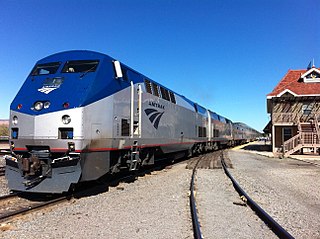History
Privately operated rubber tired motorized Streetcar service was operated in the Pocatello area at least as early as World War I (Circa 1917), with that type of conveyance plying the streets between the city's downtown and The Academy (Now Idaho State University) and other locations. These early beginnings of public transit in Pocatello expanded to significant private public bus service in succeeding decades with the costs of capitalization and operations being met through inexpensive fares. Private automobile ownership was not what it is today and the bus services thrived. However, by the mid 1960s this situation began to change with most privately owned intra-city public bus services in the United States no longer financially sustainable. Pocatello's privately owned bus services pretty much went out of service before 1965 and there would be a period of some fifteen years before any regularly scheduled fixed-route public transit system would be seen on the streets of Pocatello.
Pocatello Regional Transit (PRT), as it is known today, originated with the South Eastern Idaho Community Action Agency's (SEICAA) creation of a targeted and limited door-to-door service for senior citizens in 1972. This one bus system, using an old surplus army vehicle, was known as Tello Bus. Throughout the 70's the service capability and area expanded to include senior bus service in Pocatello and some areas of Bannock County. Title IIIB, state senior citizen transportation funding along with Bannock County, City of Pocatello and SEICAA financial assistance represented the operational and capital foundation until 1978. This was also the year that the system was able to extend service to include persons with disabilities regardless of age.
Tello Bus became Urban Transit in 1980 (subsequently called Pocatello Urban Transit—PUT) with a loop opposed loop fixed route service for the general public added to its door-to-door services for seniors and persons with disabilities. In 1982, in an action responding to the 1980 census which made Pocatello a small urbanized area, the City of Pocatello assumed responsibility for the administration and operations of the transit system.
Also in the late 1970s and early 1980s, UMTA (Urban Mass Transportation Administration, later called FTA—Federal Transit Administration.) began to provide some funding assistance for rural public transit. This policy change greatly assisted the local transit system in making it possible to serve the broader general public needs in Pocatello and the rural areas. After 1982, when Pocatello became a small urban area, the funding assistance was separated for the small urban area and the rural areas of service. Pocatello Urban Transit (PUT) underwent a final name change in the late 1980s to the system name of Pocatello Regional Transit (PRT); reflecting its return to rural service, expanded urban fixed route service, and the inclusion of routes wholly serving the Idaho State University campus.
Even though It was always a financial challenge for PRT to survive and flourish without any dedicated state funding to assist the City and rural areas in the provision of public transit, the system continued to grow while carefully husbanding limited resources. This included the use of used vehicles for the fixed route until the first new buses were bought with Stripper Well funds match and UMTA funds in 1988. Thereafter, buses were able to be purchased including the acquisition of new 30' and 35' buses for fixed route service. Today, PRT operates nearly 30 buses throughout the service area, consisting fixed-route and demand-responsive routes. All routed buses and vehicles serving persons with disabilities have ADA accessible lift/ramp and features.
Acquiring and maintaining administrative and maintenance facilities has historically presented a challenge as well. The old Greyhound Building was used for many years as a transit downtown transfer and administrative facility as well as a (circa 1920's) garage on the East side that PRT shared with other city departments for a number of years—it has long since seen its best years. In an exciting development, thanks to FTA and the City of Pocatello, a project some six years in the making is about to come to fruition with the opening in July 2014 of new transit Administration and Maintenance facilities on South 5th.

Miami-Dade Transit (MDT) is the primary public transit authority of Miami, Florida and the greater Miami-Dade County area. It is the largest transit system in Florida and the 15th-largest transit system in the United States. As of 2022, the system has 60,734,900 rides per year, or about 236,700 per weekday in the fourth quarter of 2022. MDT operates the Metrobus with their paratransit STS systems run by LSF. MDT also operates two rail transit systems: Metrorail and Metromover.

Paratransit is the term used in North America, also known by other names such as community transport (UK) for transportation services that supplement fixed-route mass transit by providing individualized rides without fixed routes or timetables. Paratransit services may vary considerably on the degree of flexibility they provide their customers. At their simplest they may consist of a taxi or small bus that will run along a more or less defined route and then stop to pick up or discharge passengers on request. At the other end of the spectrum—fully demand responsive transport—the most flexible paratransit systems offer on-demand call-up door-to-door service from any origin to any destination in a service area. In addition to public transit agencies, paratransit services may be operated by community groups or not-for-profit organizations, and for-profit private companies or operators.

RTC Transit is the name of the bus system in the Las Vegas metropolitan area of Clark County, Nevada. It is a subsidiary of the Regional Transportation Commission of Southern Nevada. While it services most of Clark County with regularly scheduled routes, most of the service is in the immediate Las Vegas Valley; outlying places such as Mesquite and Laughlin provide transit services to their residents via the Southern Nevada Transit Coalition, which uses several vehicles acquired from RTC Transit. In 2022, the system had a ridership of 46,406,800, or about 125,300 per weekday as of the fourth quarter of 2022.

The Federal Transit Administration (FTA) is an agency within the United States Department of Transportation (DOT) that provides financial and technical assistance to local public transportation systems. The FTA is one of ten modal administrations within the DOT. Headed by an Administrator who is appointed by the President of the United States, the FTA functions through Washington, D.C headquarters office and ten regional offices which assist transit agencies in all states, the District of Columbia, and the territories. Until 1991, it was known as the Urban Mass Transportation Administration (UMTA).

The Capital Area Transportation Authority (CATA) is the public transit authority serving the Lansing, Michigan area, including service on the campus of Michigan State University. In 2022, the system had a ridership of 5,874,100, or about 28,600 per weekday as of the fourth quarter of 2022.

The Delaware Transit Corporation, operating as DART First State, is the only public transportation system that operates throughout the U.S. state of Delaware. DART First State provides local and inter-county bus service throughout the state and also subsidizes commuter rail service along SEPTA Regional Rail's Wilmington/Newark Line serving the northern part of the state. The agency also operates statewide paratransit service for people with disabilities. DART First State is a subsidiary of the Delaware Department of Transportation (DelDOT).

Tompkins Consolidated Area Transit, Inc., usually referred to as TCAT, is a private, non-profit public transportation operator, created by Cornell University, Tompkins County, and the City of Ithaca to serve Tompkins County, New York. The vast majority of TCAT bus routes are based in the City of Ithaca and surrounding urban area. These routes serve Ithaca College, Cornell University, and Tompkins Cortland Community College. In 2022, the system had a ridership of 2,488,000, or about 8,000 per weekday as of the fourth quarter of 2022.

LANta, officially the Lehigh and Northampton Transportation Authority and sometimes spelled by its historic non-modified acronym LANTA, is a transit agency that provides public, fixed-route bus service throughout the Lehigh Valley region of eastern Pennsylvania, including Allentown, Bethlehem, Easton, and their respective suburbs. In 2022, the system had a ridership of 3,392,200, or about 11,400 per weekday as of the fourth quarter of 2022.

San Joaquin Regional Transit District is a transit district that provides bus service to the city of Stockton, California and the surrounding communities of Lodi, Ripon, Thornton, French Camp, Lathrop, Manteca, and Tracy. In 2022, the system had a ridership of 2,068,800, or about 8,000 per weekday as of the fourth quarter of 2022.

Housatonic Area Regional Transit, known popularly as HARTransit, is the provider of public transportation for Danbury, Connecticut and surrounding communities. HARTransit was founded in 1972 as the Danbury-Bethel Transit District by the two municipalities. The name was changed to Housatonic Area Regional Transit in 1979 after the addition of other municipal members. The agency receives funding from municipal contracts, the Connecticut Department of Transportation, Federal Transit Administration and the New York State Department of Transportation. Prior to HARTransit's establishment, Danbury had gone without transit service since 1967 when the privately owned ABC Bus Company which had replaced the Candlewood Bus Company a few months before, ceased operations. The first local bus transit operator in the area, Danbury Power & Transportation Company, operated bus services in Danbury and Bethel from 1926 to 1965. HARTransit provides service to a greater number of towns than its predecessors.

Cambus is an American public transport bus system, primarily serving the University of Iowa campus in Iowa City, Iowa. The service is intended to provide transportation for students, faculty, and staff around the main campus, University of Iowa Research Park, residence halls, and commuter parking lots. Cambus is a no-fare service open to the general public, and provides approximately 4,500,000 rides per year. It is one of three transit systems in the Iowa City area, the other two being Iowa City Transit and Coralville Transit, and Cambus shares several stops with them.

The Denton County Transportation Authority (DCTA) is the transit authority that operates in Denton County, Texas. It operates transit service in three cities within Denton County, as well as the A-train, a regional commuter rail line to Carrollton. In 2022, the system had a ridership of 2,124,700, or about 9,900 per weekday as of the fourth quarter of 2022.

Sarasota County Area Transit (SCAT) provides public transportation for Sarasota County, Florida and is operated by the county. SCAT maintains 27 fixed-line bus routes plus a dial-a-ride paratransit service. The majority of the routes operate from Monday through Saturday with select service on Sundays.

The MetroWest Regional Transit Authority (MWRTA) is a regional public transit authority in the state of Massachusetts providing bus and paratransit service to sixteen communities in the Boston MetroWest. The MWRTA was formed in 2006 and began service on July 1, 2007 with the purpose of filling a void in public transportation service in the MetroWest. Through a commitment to deliver expanded public transportation service to the business and commercial hubs across the MetroWest region, the goals and purpose of the MWRTA are embodied in its mission statement: "Build a public transportation system to deliver convenient and dependable service that enhances mobility, environmental quality and economic vitality in the region." Funding for the MWRTA comes partially from the state and local governments of the communities it operates within.

Public transportation in the United States refers to publicly financed mass transit services across the nation. This includes various forms of bus, rail, ferry, and sometimes, airline services. Most established public transit systems are located in central, urban areas where there is enough density and public demand to require public transportation. In more auto-centric suburban localities, public transit is normally, but not always, less frequent and less common. Most public transit services in the United States are either national, regional/commuter, or local, depending on the type of service. Furthermore, sometimes "public transportation" in the United States is an umbrella term used synonymously with "alternative transportation", meaning any form of mobility that excludes driving alone by automobile. This can sometimes include carpooling, vanpooling, on-demand mobility, infrastructure that is fixated toward bicycles, and paratransit service.

Maui Bus is the public transportation service of the island of Maui, Hawaii, and is operated by Roberts Hawaii under a public-private partnership with Maui County government. They operate 13 regular local bus routes and 4 commuter routes, which have a single early morning run and a return trip in the afternoon and require a reservation.
The Monroe County Transit Authority (MCTA), also known as the Pocono Pony, is a public transportation service located in Monroe County, Pennsylvania. It provides rural and inter-city fixed route bus and paratransit service within the county. MCTA is funded in part by PennDOT, the Federal Transit Administration, local match and farebox revenue.

Valley Regional Transit is a public agency which is the main provider of mass transit service in metropolitan Boise, Idaho. Eighteen routes operate in Ada County with seven of these providing six-day-per-week service in Boise. An on-demand service is provided in Canyon County. Four intercounty commuter lines are also offered. Both a peak hour express route and an all-day limited-stop incarnation of the same route connect Nampa and Meridian. Service also connects Boise State University with the College of Western Idaho in Nampa in which a third route directly links the two. A fourth express route only runs twice per day in each direction connecting Caldwell and Boise.
The HUD Reports were a series of studies in mass transit systems, funded by the Urban Mass Transportation Administration (UMTA) department of the United States Department of Housing and Urban Development (HUD). The HUD reports were extremely influential in the development of the personal rapid transit (PRT) concept, small pod-like vehicles that automatically travel from point-to-point in extended networks. Their publication in early 1968 sparked off PRT development projects at dozens of companies around the world. In spite of intense interest in the early 1970s, political winds shifted and today there is only one HUD-inspired PRT system in commercial operation, the Morgantown PRT in West Virginia.
The Yuba-Sutter Transit Authority, operating as Yuba-Sutter Transit, is the public transportation agency serving the Yuba–Sutter area in Northern California.






















